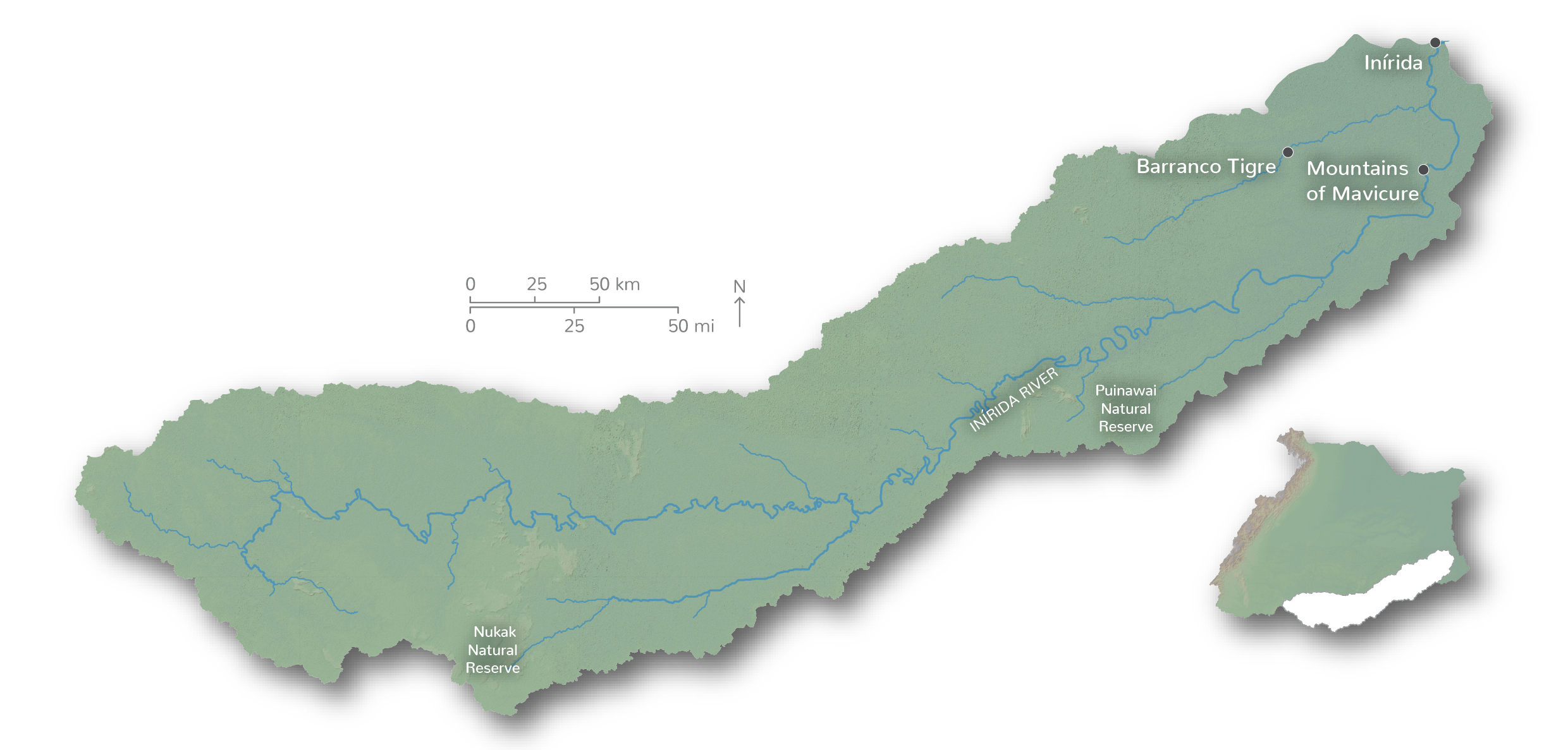
Characteristics of the Inírida River Basin
The Inírida River is the main southern tributary in the Colombian portion of the Orinoco River with a length of 1,419 km. The river originates in the low plain forests of the transitional Amazon biome and is characterized primarily by rainforests and flooded forests. Some of the main threats to the Inírida are exploitation of natural resources, overfishing, alluvial mining, pollution, and solid waste dumping.
The River maintains its natural integrity but its population faces challenges

The Inírida River Basin received an overall B grade (68%). Of the nine indicators assessed, scores were excellent (>80%) for risk to water quality, water supply and demand, and for the all indicators within the category Ecosystems & Landscapes. However, the basin did have the lowest score in all of the Orinoco River Basin for human nutrition (31%) and moderate results for the water quality index (57%). The low score for human nutrition is likely due in part to the low richness of fish and therefore lower food supply as compared with other Andean sub-basins. The low water quality index can be attributed largely to limnology changes that result from mining activities. Although no river dolphin data was analyzed for this version of the report card, due to lack of data around the Puinawai and Nukak Natural Reserves, new information on river dolphin abundance will become available soon for future report cards.

